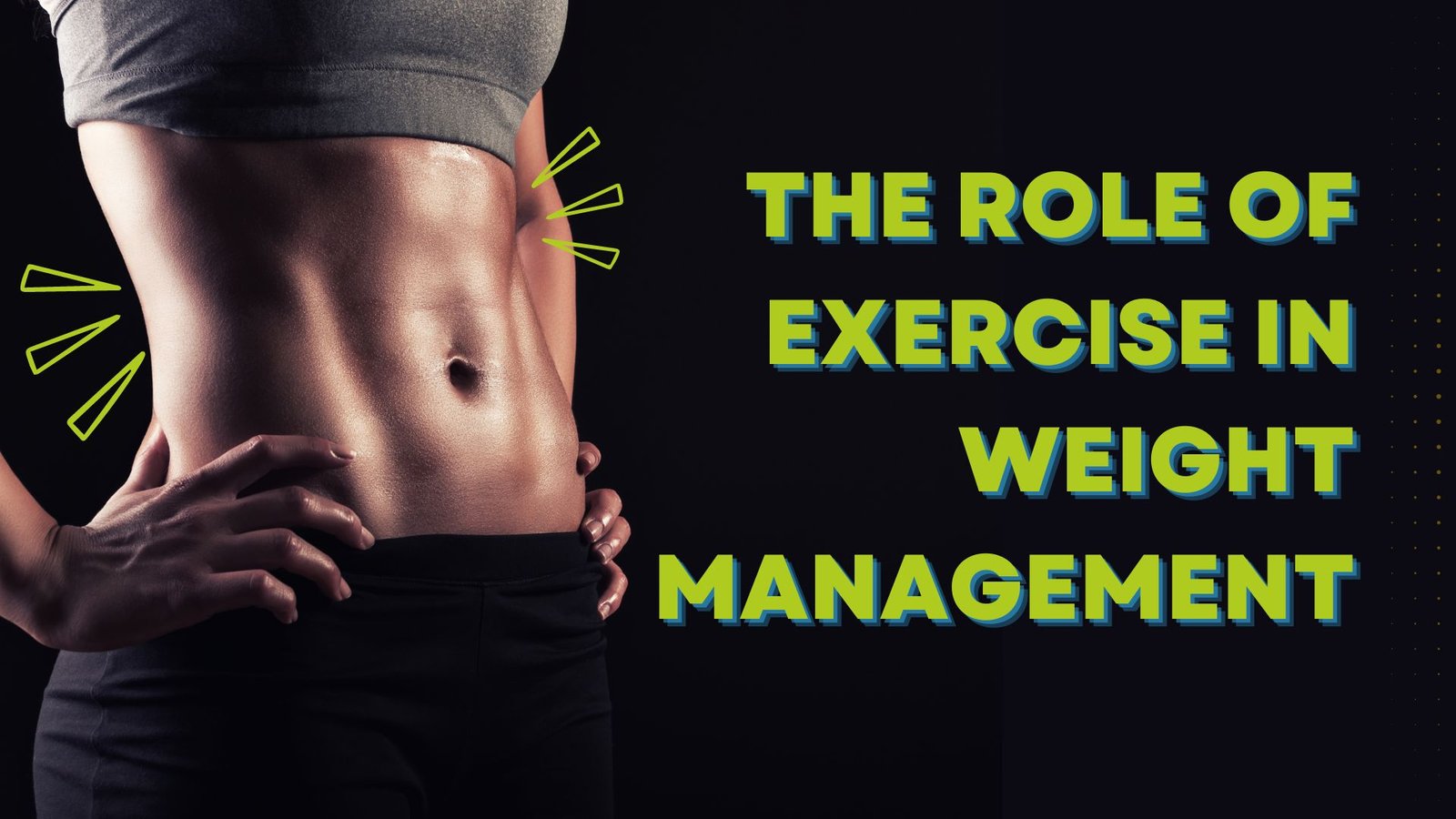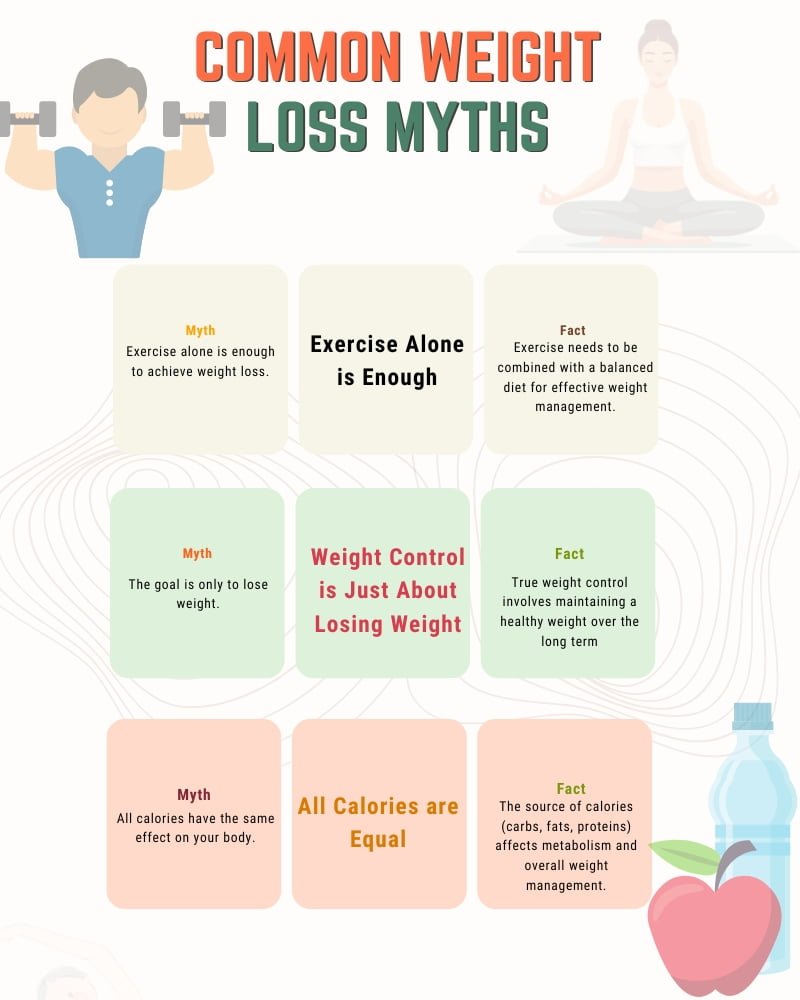Weight Management and Exercise: A Balanced Approach to a Healthy Weight

Weight management has grown in importance in today’s fast-paced society. In this regard, exercise is crucial, since it improves health in general and the body in particular. You may make better judgments and strike a better balance on your journey to a healthy weight if you know how exercise affects weight management.
Weight Management and Its Significance
Managing one’s weight is important more than simply looking good; it’s also about avoiding serious health problems down the road. You can improve your quality of life by reducing your risk of illnesses like diabetes, heart disease, and some malignancies with proper weight management.
The Importance of Physical Activity in Contemporary Lives
Modern society has elevated exercise from a mere physical activity to an essential part of living a healthy lifestyle. Incorporating exercise into daily routines is crucial for obtaining and maintaining a healthy weight, especially considering the prevalence of sedentary behaviors.
How Can I Manage My Weight?
Meaning and Significance
The goal of weight management is to help people reach and stay within a healthy weight range. Finding a happy medium between caloric intake from food and caloric expenditure from exercise is the key. Proper weight management aids in warding off obesity, keeps muscle mass intact, and promotes general well-being.
Misconceptions People Have Regarding Losing Weight
- Fallacy: Losing weight is as simple as exercising.
Truth: A balanced diet and regular exercise are the two most important components of a successful weight management program. - Fallacy: The sole goal of weight control is to reduce body fat percentage.
Truth: It’s also about not putting on weight in the future and keeping the weight off. - Fallacy: Calories don’t matter.
Truth: Calories have distinct effects on metabolism and weight management depending on whether they come from carbs, fat, or protein.

Exercising for Weight Loss: The Science Behind It
Calorie Burning Mechanism of Exercise
A person’s caloric expenditure increases in response to physical exertion. The process entails releasing energy by decomposing fat and carbs that have been stored. Calories burned are a function of exercise time and intensity. Depending on your weight and running speed, a 30-minute run, for example, can burn approximately 300 calories.
Metabolism and Its Function in Weight Control
Your body’s metabolic process is how it turns food into energy. A faster rate of calorie expenditure is the result of a greater metabolic rate. Exercising on a regular basis can increase your resting metabolic rate, which means you burn more calories overall.
Exercises That Can Help You Lose Weight
Physical Activity for the Heart
How Cardio Can Help You Lose Weight
Running, cycling, and swimming are all forms of cardiovascular exercise that raise heart rate and cause calorie expenditure. When it comes to boosting cardiovascular health and losing fat generally, it works. For successful weight management, it is essential to engage in cardiovascular workouts for a minimum of 150 minutes each week.

Cardio Exercises That Really Work
- Jogging: Enhances cardiovascular fitness and burns calories rapidly.
- Cycling: Low-impact and great for building lower body strength.
- Swimming: A full-body workout that’s easy on the joints.
Strength Training: How It Can Assist With Weight Loss
For the purpose of building muscle, strength training entails the use of resistance, such as weightlifting. Gaining muscle mass can increase your resting metabolic rate because muscular tissue burns more calories at rest than fat tissue. Tones and shapes can be achieved with strength training as well.
A Beginner’s Guide to Strength Training
- Free-Range Movements: Perform squats, lunges, and push-ups.
- Lifting Weights: Begin with less weights and work your way up as your strength grows.
- Resistance Bands: You can do a lot of different strength exercises with resistance bands.
Exercises Involving Short Bursts of Extreme Strength
How Effective High-Intensity Interval Training Is for Fat Loss
High-intensity interval training (HIIT) consists of doing brief bursts of very intense exercise followed by shorter rest intervals or less strenuous activity. Faster fat loss and improved cardiovascular fitness are the results of this strategy.
Complete HIIT Routines
- Tabata: Alternate between 20 seconds of intense exercise and 10 seconds of rest for a total of 4 minutes.
- Circuit Training: Go between several types of exercises, such as high knees, jump squats, and burpees.
Exercises for Flexibility and Balancing
Managing Your Weight with Yoga and Pilates
Flexibility, stability, and core strength are the primary goals of Pilates and yoga. Although these activities do not replace more strenuous forms of exercise like cardio or strength training, they do improve health in general and can help with weight control through things like better posture, less stress, and more body awareness.
Weight Loss Supportive Stretching Exercises
- Dynamic Stretching: Helps increase flexibility and get muscles ready for workouts.
- Static Stretching: After a workout, stretch statically to increase flexibility and decrease muscle pain.
The Mental Advantages of Working Out
How Physical Activity Alleviates Anxiety and Stress
When you work out, your brain releases endorphins, which have dual functions as both a natural painkiller and a mood enhancer. Anxieties and stress can be greatly alleviated with regular exercise, which in turn improves mental health.
How Emotional Well-Being Affects Weight Control
Maintaining a healthy weight is closely related to one’s mental health. Feelings of sadness, anxiety, or stress can trigger emotional eating, which in turn can cause weight gain. By elevating mood and offering a constructive means of stress relief, exercise aids in the reduction of these problems.
Diet and Exercise: A Dynamic Duo
A Well-Rounded Diet and Its Significance
In addition to regular exercise, a healthy, well-balanced diet is also crucial. If you want your body to perform at its best and recover faster, you need to eat nutrient-dense foods.
Tips for Combining Physical Activity and a Healthy Diet
- Pre-Workout Nutrition: Fuel up on a well-rounded meal that includes carbs and protein at least one to two hours beforehand.
- Post-Workout Nutrition: To help your body recover faster, eat some carbs and protein within 30 minutes after your workout.
Problems That People Face and Solutions to These
Time Constraints
It could be difficult to fit exercise into one’s schedule. Taking the stairs instead of the elevator or fitting in brief workouts are two examples of how you might incorporate physical exercise into your day-to-day life.
Disinterest and Irresponsibility
Try new things or work out with a friend to keep your sessions exciting. Another strategy for staying motivated is to set modest, attainable goals.
Physical Disabilities and Their Solutions
If you have any physical limitations, it is important to see a healthcare professional and adjust workouts accordingly. There are a lot of workouts that may be adjusted to suit different demands.
Why Being Consistent Is Crucial
Why and How Consistent Exercise Brings About Long-Term Success
Maintaining a regular routine is essential for successful weight loss in the long run. Getting regular exercise is a great way to start a healthy habit and keep it up.
Methods for Maintaining Regularity
- Make Reasonable Objectives: Divide more ambitious objectives into more achievable subgoals.
- Set Up a Program: Workouts should be scheduled just like any other appointment.
- Monitor Development: Stay motivated by monitoring improvements.
Monitoring Your Development
Apps & Tools for Tracking Weight Loss
A plethora of fitness, nutrition, and progress monitoring applications are at your fingertips. Fitbit and MyFitnessPal are two great tools that can help you remain on track and provide useful insights.
How Wearable Tech Can Help With Weight Loss
Activity, heart rate, and calorie expenditure data is provided in real-time via wearable devices such as smartwatches and fitness trackers. You may get a better view of your fitness journey and boost your motivation with these tools.
Expert Advice’s Function
If You Need Assistance, Consult a Trainer or Nutritionist
For further tailored advice and encouragement, talk to a registered nutritionist or certified personal trainer. Individualized strategies for physical activity and healthy eating can be developed with their assistance.
How Expert Help Can Make Your Trip Even Better
Your weight control attempts will be more successful with the help of a professional who can advise you, hold you accountable, and motivate you.
In Summary
Achieving and maintaining a healthy weight requires a weight management approach that includes exercise. Make great progress toward your fitness objectives by learning about various forms of exercise, overcoming obstacles, and maintaining consistency. Discover what works for you and commit to a healthier lifestyle; remember, everyone’s path to weight management is different.
FAQs
What is the recommended amount of exercise for losing weight?
Aim for 75 minutes of high-intensity exercise or 150 minutes of moderate-intensity exercise each week, with strength training activities performed at least twice per week.
Is it possible to lose weight just by exercising?
When coupled with a healthy diet, exercise is the most powerful tool for losing weight.
When it comes to exercising for weight loss, what time of day is optimal?
You should work out whenever it is most convenient for you and when you are at your peak energy. Time is less crucial than consistency.
When I workout regularly, how can I maintain my motivation?
Keep yourself motivated by setting attainable goals, keeping track of your progress, exercising in a variety of ways, and finding an exercise partner.
Can I lose weight by exercising alone, without cutting back on food intake?
While physical activity on its own can help with weight loss, a balanced diet is essential for the best outcomes.
Disclaimer: This article is written for informational and educational purposes only. The content presented on this page should not be considered as a substitute for medical expertise.




